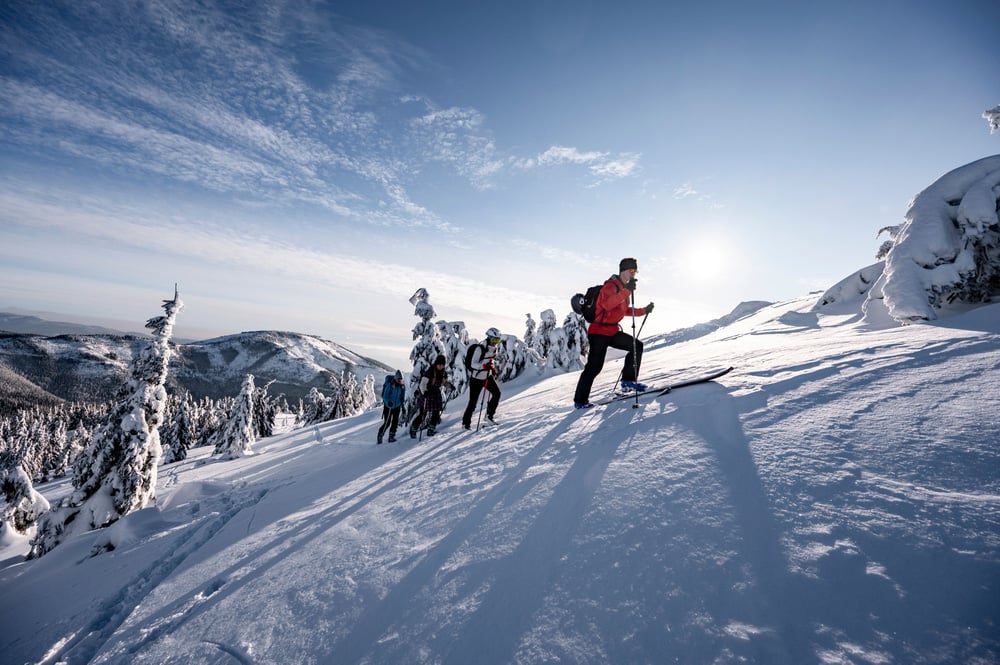Downhill skiing is a very popular winter sport, but with the current rising prices on overcrowded slopes and endless lines for the cable car, ski tourism is enjoying increasing popularity. If you feel confident on skis and can manage at least a slow jog, it won't be a problem for you.
What is ski touring?
It is a common term for a sport activity that involves walking up a snowy hill with the help of anti-slip skins on skis - either on a slope or in the backcountry.
The term ski touring should be used correctly for this “hobby” activity. The name skimo/ski mountaineering means a higher level, which includes much more demanding conditions and requires a higher level of professionalism. However, for simplicity, we use them as synonyms in this article.
How to start?
For the first time, we recommend visiting a ski resort where you can rent equipment and try it out in a safe environment. Several ski resorts are open for ski touring, they have marked ascent routes, or even ungroomed pistes.
Attention: When moving around the resort, do not forget to respect the given rules for ski tourers.
Even if you “just” walk up the slope, you will find that it is quite a hard work, and suddenly, you will enjoy the well-deserved descent in a completely different way.
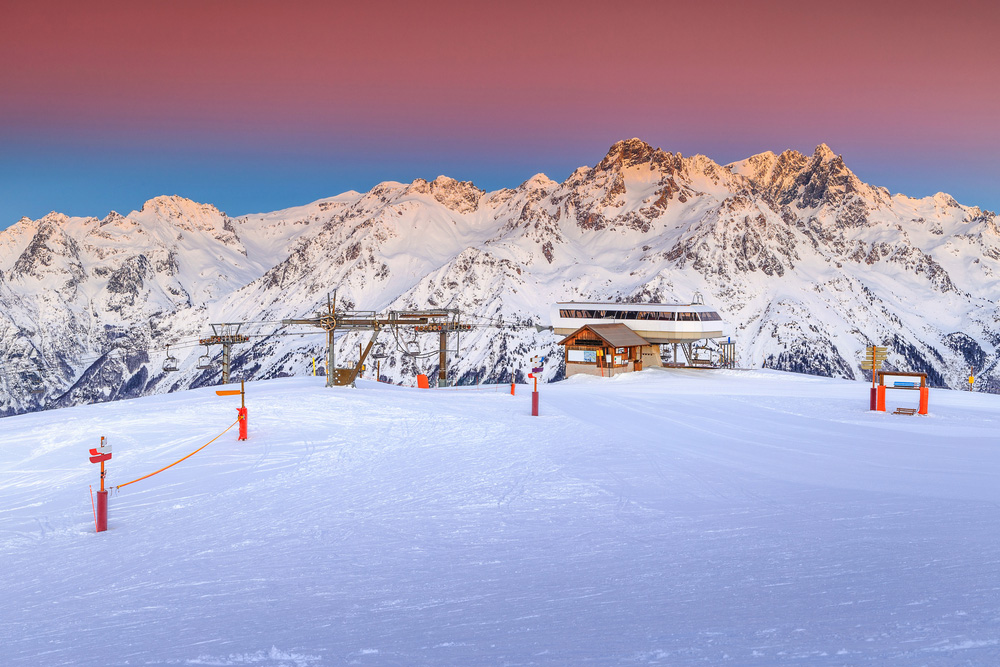
If you go off-piste, prepare properly - check the weather forecast, avalanche danger and don't overestimate yourself. In that case, your equipment should not lack avalanche safety gear.
MUZIKER TIP:
Find an experienced partner or use the services of professional guides who know their way around - they will help you improve your technique.
Basic equipment
Once you know that this is the right thing for you, you need your own gear that differs from classic ski equipment.
Touring skis
Since you can feel every extra gram on the way up, the emphasis is on low weight of the skis. At the same time, they are wider to make easier the way through deep snow and not slip.
Adapt the ski selection to the conditions in which you plan to ski.
MUZIKER TIP:
The ideal ski length is your height minus 10 cm. The minimum width of the ski under the binding in mm should be your weight in kg plus 10.
Touring skins
The skins are attached to the bottoms of skis, allowing forward movement and preventing backward movement. They are made of mohair or in combination with artificial fibre.
They are sold universally – you choose them according to the length and width of your ski; or specifically for a particular brand and model of skis. Take a look at the whole offer.
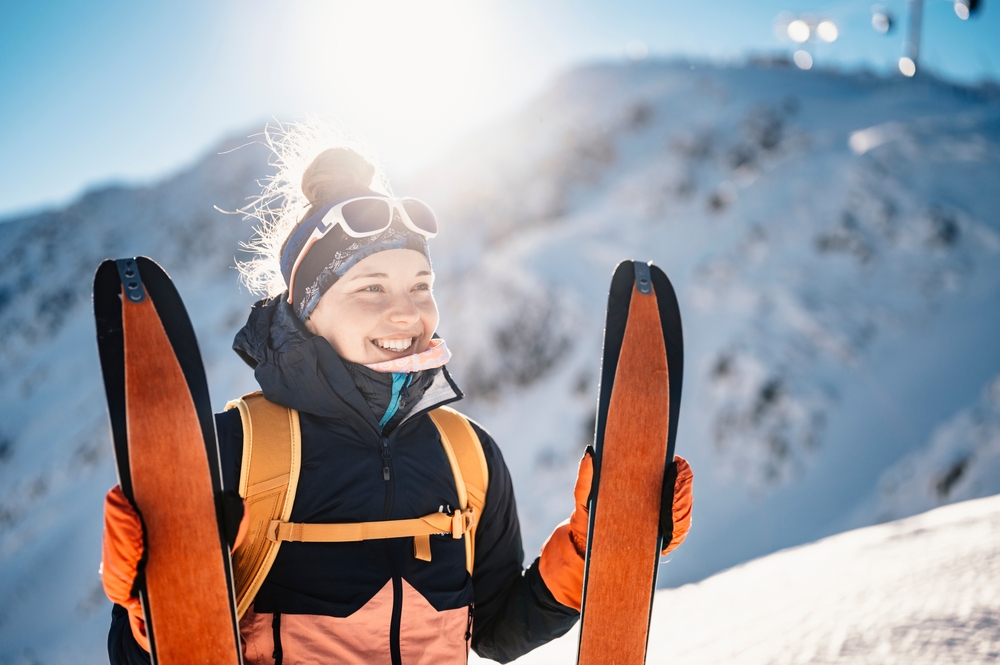
Touring binding
The job of the binding is to keep the toe of the ski boot firmly attached to the ski, while the heel rises freely during ascent. However, it can be attached firmly when descending.
The binding provides adjustable support under the heel depending on the slope you climb.
You have a choice of two systems - frame and pin.
Frame binding: The ski boot is fastened to the connecting frame between the toe and the heel. It rises with every step up and is secured when going down. Binding Tyrolia Ambition offers all the benefits of innovative technology.
Pin binding: The ski boot is pinned directly to the ski using two side holes on the toe of the boot and matching metal spikes on the front of the binding. Take a look at ATK Bindings Crest.
MUZIKER TIP:
Some bindings do not include a brake in the base, and you have to buy it separately.
For climbing on icy snow, it is worth adding crampons to your equipment, for example Fritschi Xenic.
Touring boots
These ski boots have a ski/walk mechanism that provides freedom of movement when walking uphill. It can be secured tightly around the foot when going downhill.
They are similar to hiking boots - they are made of lighter material and have a rubberized anti-slip sole. Always match the ski boots with binding. Explore your options.
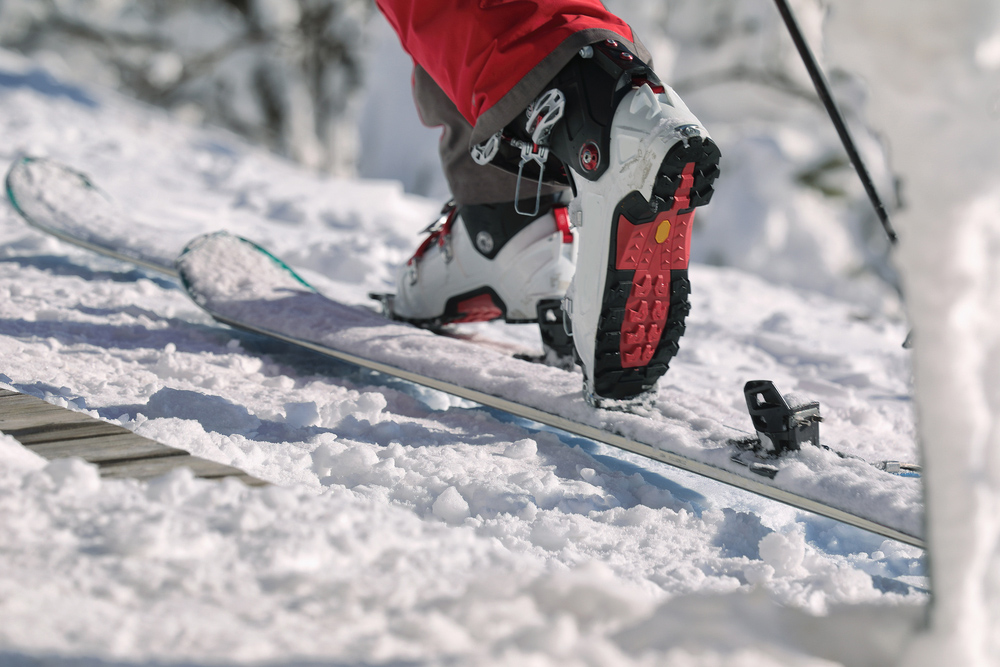
Turing poles
The poles are telescopic so that they can be extended for ascent and shortened for the downhill. In order not to get stuck in deep snow, they usually have a wide snow basket underneath.
The serrated tip ensures that they do not slip in rocky terrain. Again, the lighter, the better. You can choose from trekking poles, which you can also use for hiking.
Other equipment
In addition to the basic equipment, several other useful things should not be forgotten.
Helmet
A helmet should be the absolute foundation for your safety when descending - whether on the slopes or in the open terrain. Choose one which is light, well-ventilated, but at the same time safe.
Backpack
Since you need to pack a few things on the ski slopes, it is worth buying a suitable ski backpack, which also allows you to attach the skis when you have to carry them.
Avalanche safety gear
Safety in the mountains cannot be underestimated. If you are going out into the open terrain, you should not miss a functional avalanche gear. It should contain avalanche transceiver, shovel, and probe. It is worth taking an avalanche safety course - learn how to avoid avalanches and how to use the equipment.
Glasses
Do not forget about high-quality UV protection, as snow reflects sunlight. Select ski goggles that you will appreciate on the descent or sunglasses that will be more comfortable for you on the climb.

Clothes
Ski touring places specific requirements on clothing, so it must be chosen very carefully. While you are climbing, you will definitely sweat a lot, but the moment you stop, you will quickly lose the accumulated heat. That's why layering is key, and you should expect to dress or undress as needed.
Bottom layer
It's like your second skin. It should be thermoregulating, wick away sweat well and protect against overheating. A t-shirt and trousers are suitable choices.
Middle layer
The middle layer is worn over the bottom layer. It is a warm, insulating jacket that can be easily taken off and put on. An example is a winter jacket with down or synthetic filling, which is not only light, but can also be easily rolled into a backpack when not in use. An excellent choice is, for example, the outdoor jacket from Jack Wolfskin.
Top layer
The top layer protects against the wind and weather. It should be light, made of softshell or hardshell. You will also appreciate the zip ventilation holes on the pants, like the Helly Hansen Odin Mountain pants. You can complete them with a jacket of the same brand Verglas Infinity.
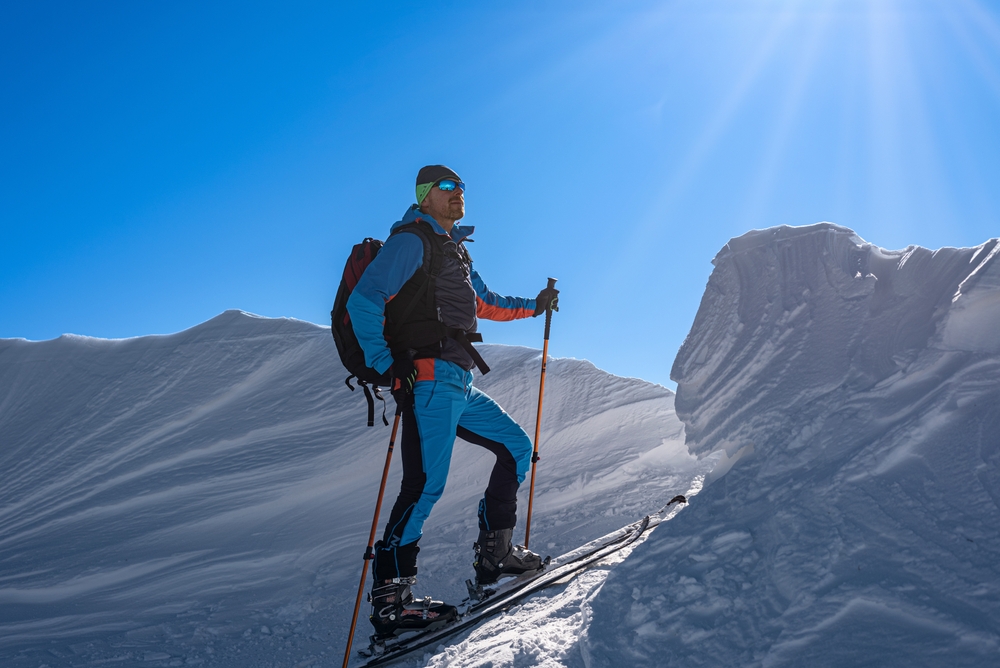
Accessories
It is definitely worth investing in two pairs of gloves – thin, breathable outdoor gloves for climbing and thick warm ski ones for descending.
Don't forget quality ski socks to prevent chafing, the ideal height is below the knee. The multifunctional scarf is also a very good helper in changeable weather.
Even if it looks like a big investment at first, we can assure you that it will pay off quickly. Not only do you not pay for ski passes, but you also significantly improve your fitness level and strengthen your body. You will never work out this much in an hour in the gym, and at the same time you are in the fresh air in beautiful nature.
 Musical Instruments
Musical Instruments

 Water Sports
Water Sports


 Sport
Sport


 default
default

